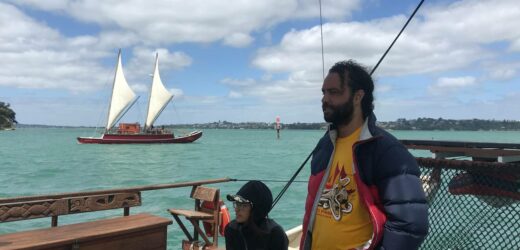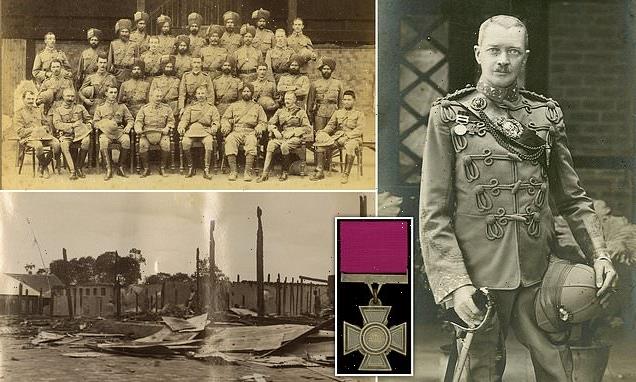Being tossed in the ocean 100km from anywhere in the middle of storm would invoke a sense of fear in most people.
But Noenoe Barclay-Kerr is not alone, her tūpuna are guiding her.
She is the daughter of master navigator Hoturoa Barclay-Kerr and a torch-bearer for the next generation keeping the skills of traditional waka hourua wayfinding alive.
Waka hourua are double hulled voyaging canoes and navigation relies on the use of stars, the moon and sun, wind, wave patterns and birds.
From the moment Noenoe (Waikato, Ngāti Mahuta) arrived, she’s been immersed in the waka world.
She was born at a waka ama competition her father was racing in and spent her childhood absorbing the knowledge of the people around her – the likes of Tā (Sir) Hekenukumai (“Hector”) Busby, Ema Siope, and Stanley Conrad.
“Throughout my childhood, I remember travelling up to Aurere and helping fix up Te Aurere, the waka. All the uncles were there: Stanley Conrad, Koro Hek,” she said.
Te Aurere was the first traditional waka hourua built by Busby, from two kauri trees from the Herekino State Forest.
“There were a whole bunch of master navigators and waka sailors up there doing mahi on Te Aurere.”
School holidays were spent being taught how to lash, how to fix a mast and how to look after a waka.
“I remember talking to Koro Hek and he was teaching us this stuff, just discreetly. It wasn’t a full on, ‘this is what you need to know’,” she said.
“It was like when you’re having a cup of tea with someone.”
Noenoe is a force of Te Toki Waka Hourua Trust, which has three waka hourua that are used for youth development and education programmes.
Growing up, Uncle Stan, or Stanley Conrad, was the go-to for lashing a waka, while “Jacko” or Jack Thatcher taught her bits and pieces about navigation.
“All together with all those little teachings you start to piece things together, one bit at a time and that’s when you understand that these aren’t just casual conversations. They are going to become a part of whatever they’re going to test you on later on.”
Noenoe is tested every time she steps onto her waka hourua.
“I guess there is this romanticised idea with sailing waka,” she says.
“People think it’s this amazing spiritual journey and in some cases it really is. But when you’re on a waka you have to be a really solid person. You have to strong, mentally, physically, emotionally.”
But she still gets seasick every time she sails.
“It still doesn’t stop me. I still haven’t gotten used to it. Every time I go on, I’m spewing for two days, then I’m good.
“When you’re floating in the middle of the ocean, relying on the stars, moon, sun, wind and swells to know which direction you need to go in, you become connected to the environment around you.
“When you’re in the middle in the ocean, whether you’re going through a storm or you’re sitting there on a calm night and the stars are shining, you’re reminded of how small you are. You’re just a little piece to the rest of this big puzzle. The waka, it humbles you.
“There is this whole environment: the sea, the whenua, the sky. All of that is still there. All the animals are still there, and you start to notice everything around you.
“It’s noticing the stars aren’t always in the same place throughout the year. If I see it there at 10pm in January, it’s going to be somewhere completely different at 10pm in June.
“For me, I have full trust in my tūpuna, I have full trust in atua (god/spirit). So, when I’m out on the ocean, I love it 100 per cent.”
Perhaps one of Noenoe’s greatest teachers was her father, Hoturoa.
“When my dad was young, from the time he was a little boy and knew about our people, our culture, he was told our ancestors paddled here. There was no other kōrero, apart from that.
“Then he started to think that if you’re paddling from Hawaii to New Zealand or from Rarotonga, it doesn’t make sense, it’s way too far. He didn’t want to leave it at that. As he got older, he was encouraged by a few kaumātua to pursuit that mātauranga (knowledge).
“[Hoturoa] got sent to Hawaii to go and train under the navigators who trained under Papa Mau [Mau Piailug].
“Papa Mau was still alive then, so he was slowly passing his knowledge on to everyone in the Pacific and that’s when they all came back.”
Of the many sailings Noenoe has done, one voyage burns in her heart.
“The one that was really special to me was sailing back into Kāwhia, my first time sailing back into my own harbour was last year,” she said.
“I’ve sailed around New Zealand, but I’ve never sailed into Kāwhia harbour. We’d heard so many stories about our tūpuna coming Kāwhia, giving the waka to the next iwi over to use for a while, then it comes back. There were all these amazing stories.”
Noenoe had learned about different points on the land in Kāwhia that were used for navigational purposes but had only ever seen them from the land.
“When you’re out at sea, and that information is being used, that’s when it starts to make sense to you. Like, I get it now. I see it. I’m practising it. That’s what really makes it special. That’s what everyone is talking about.”
Noenoe is young and full of zest with an infectious personality that I imagine would really keep you motivated at sea.
And she’s wise, a tribute to the people who have imparted their wisdom to pass onto the generation after her.
“I hope the waka kaupapa in 10 years’ time is double what it is now,” she says.
“I just hope the conversations that you have about waka, they’re not this ancient artefact that doesn’t exist anymore, because we still have conversations like that.
“[I hope] people can associate themselves to a waka. They know what their waka is and where it comes from. It’s not this far off idea that your waka was this old ancient thing in old stories. It’s still who you are. That’s what I hope for.”
Source: Read Full Article

/cloudfront-ap-southeast-2.images.arcpublishing.com/nzme/4XEHY7NBTJD232T56CLH5DW2YE.jpg)
/cloudfront-ap-southeast-2.images.arcpublishing.com/nzme/CJ7XUOJR6RNF4NGG6EIYMIO72Q.jpg)
/cloudfront-ap-southeast-2.images.arcpublishing.com/nzme/7H665TXIGXN2HIHZ4HIWI4GQW4.jpg)
